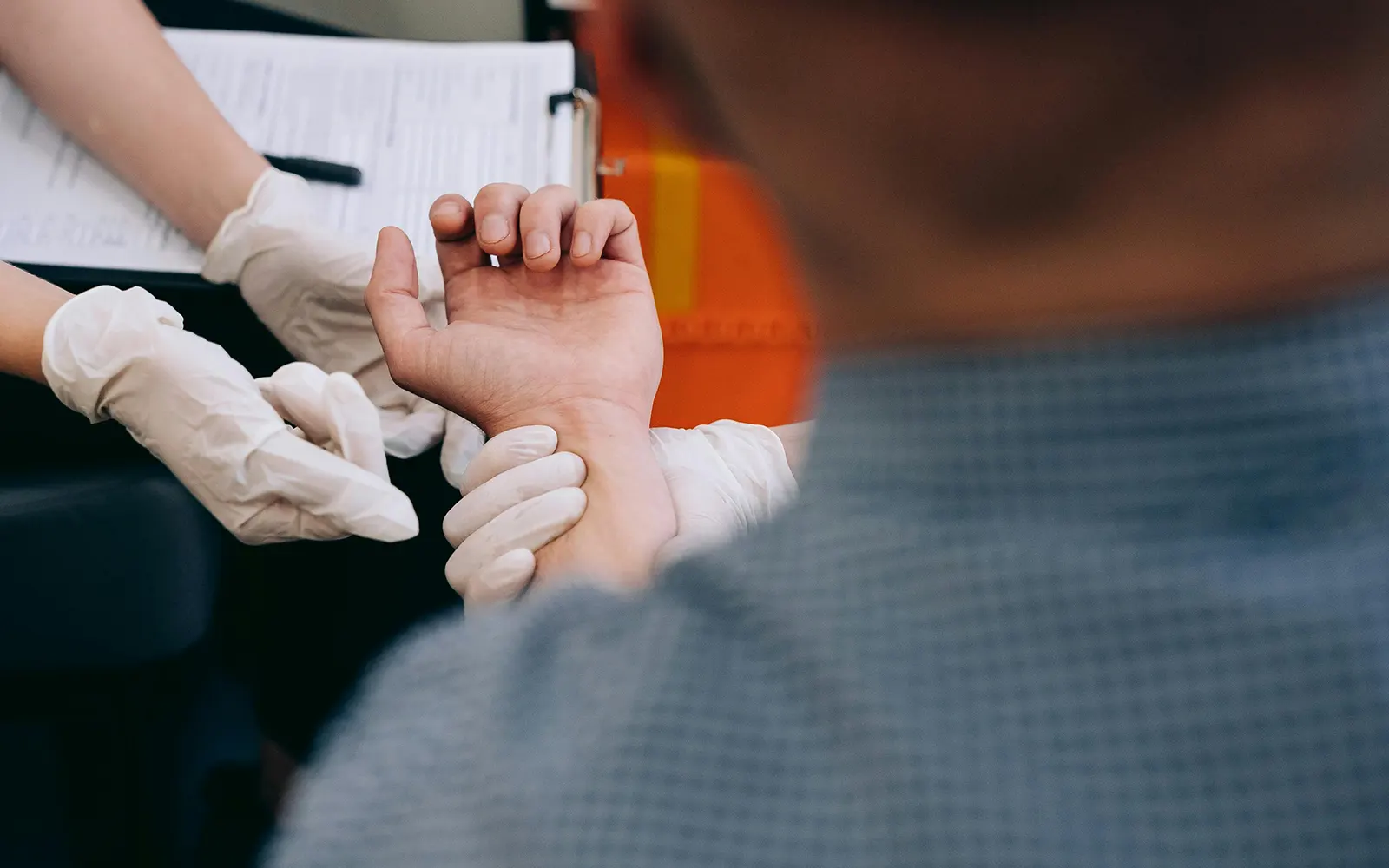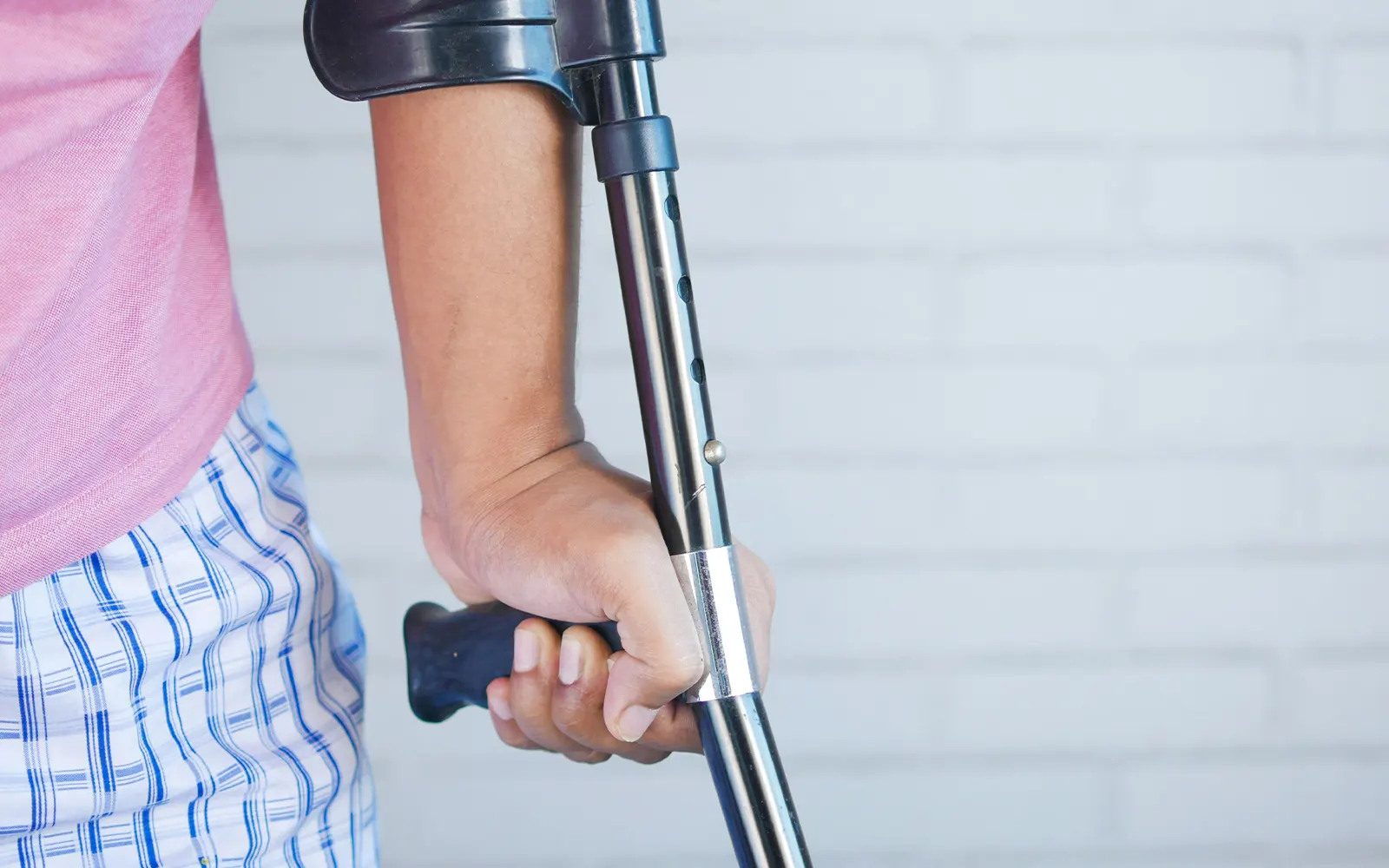Slip and fall accidents are the leading cause of emergency room visits in the United States, accounting for more than eight million injuries each year. Falls occur on the job, in retail stores, at nursing homes, and in private residences, leading to serious injury and even death. Slip and fall accidents also have significant economic impacts, including medical expenses, missed days from work and millions of dollars in worker’s compensation claims.
These incidents are preventable and often the result of negligence on the part of a property owner, caretaker, or employer. If you’ve suffered a slip and fall injury, you may be entitled to compensation that can help pay off medical bills and secure your family’s financial security.
To recover the maximum compensation owed, plaintiffs in personal injury cases need strong evidence, witness testimony, and expert legal counsel. The San Diego slip and fall lawyers at Kroger-Diamond & Campos can assist with these needs and more.
Common Places Where Slip and Fall Accidents Occur
While slip and fall injuries can occur anywhere, some locations see more slip and fall accidents than others. Many of these incidents occur at the workplace, retail businesses, nursing homes, and residential properties. Each of these locations has unique risk factors that make individuals more susceptible to falls.
Falls in the Workplace
According to the Centers for Disease Control and Prevention, non-fatal fall injuries in the workplace happen most often to workers in the educational, health services, and social assistance fields. Occupations with the highest rates of slip and fall injuries include:
- Nursing and residential care
- Ambulance services
- Building cleaning and maintenance
- Transportation and materials moving
- Restaurants, retail, and sales
When it comes to fatal occupational falls, the construction industry experiences the highest number of fall-related deaths. Most of these deaths are the result of falls from heights.
Workplace falls create a considerable financial burden for employees in the United States and for the U.S. economy. Medical expenses and worker’s compensation payouts associated with slip and fall accidents cost $70 billion annually.
Falls at Retail Businesses
Businesses such as restaurants, clothing retailers, and grocery stores experience a large number of slip and fall accidents. Both customers and employees are at risk of slipping on wet or soiled floors, and for tripping over unsecured cords and loose floor mats. Untreated public parking lots also present a slipping hazard when coated in snow and ice.
Falls in Nursing Homes
The CDC reports falls as the leading cause of injury for adults over age 65. More than 14 million older adults fall each year, and over 60% of nursing home residents will experience a fall annually.
Failure to use proper safety aides such as gait belts or bed rails, poor employee training, and nursing home neglect are some of the reasons behind nursing home falls. These injuries are common, costly, and completely preventable.
Falls at Residential Properties
Homeowners have a responsibility to ensure the safety and security of invited guests to their residence. Slick walkways, broken stairs and handrails, and burnt-out exterior lighting all contribute to residential slip and fall injuries.
According to the National Floor Safety Institute, half of all accidental deaths that occur at home are caused by falls that happen at the ground level. The bathroom and kitchen are common locations for both fatal and non-fatal slip and fall injuries.
Impacts of Slip and Fall Accidents
The consequences of slip and fall accidents are long-lasting and costly. Poor health outcomes and economic hardship for the injured, as well as the impact on businesses, employers, insurance companies, and the overall economy, make slip and fall accident prevention a public health concern.
Health Impacts
Physical injury as a result of a fall or slip accident can range from mild to severe, causing temporary or chronic pain, impairment, and disability. Some common injuries sustained from slips and falls include:
- Fractures
- Strains and sprains
- Bruises and cuts
- Concussions
- Traumatic brain injury
- Back and spinal cord injuries
- Death
Hips, arms, and spinal columns are the bones most frequently fractured in slips and falls. Approximately one-quarter of fractures are severe enough to require surgery.
In some cases, slip and fall victims die from their injuries. This is particularly true for the elderly population, which is already at high risk for fractures. Of all fractures sustained from falling, hip injuries are the most serious. Broken hips often prevent older patients from living independently and can lead to other serious health outcomes such as bedsores and pneumonia.
Economic Impacts
Medical expenses, hospital stays, and ongoing rehabilitation therapy contribute to the overall economic costs of slips and falls. 85% of worker’s compensation claims can be attributed to slips on slick floors. Claims for on-the-job falls average $51,047 per incident, higher than the average healthcare costs for other types of worker’s compensation injuries.
That number doesn’t account for injuries resulting in lifelong pain and disability that prevent a worker from returning to their previous occupation. It also doesn’t include the expense of home modification, ongoing home health care for slip and fall victims unable to live independently, or ongoing treatment and therapy.
The attorneys at Kroger-Diamond & Campos push slip and fall cases to their compensation limit by calculating past, current, and projected expenses. They also account for days missed from work and lost wages, so you walk away with a fair settlement.
Determination of Fault in Slip and Fall Injury Cases
Despite how common these accidents are, many people don’t report slips and falls at work, in the store, or at someone else’s home. They may believe or be led to believe that an accident was their fault.
However, slips and falls are often the result of negligence on the part of a business or property owner with an obligation to protect employees, patients, and invited guests against injury.
Negligence and Liability
Property owners are responsible for the maintenance of their property. If an employee, customer, or guest is injured as a result of the property owner’s failure to maintain necessary safety standards, the owner can be held financially liable for negligence.
Some examples of premises liability include:
- Lack of wet floor signs
- Missing carpet runners
- Poorly maintained or installed flooring
- Unattended spills
- Misuse of cleaning products
- Uncleared sidewalks and parking lots
- Missing or broken handrails
- Lack of bathroom grab bars
- Poor lighting
- Unsecured cords or floor mats
- Cluttered walkways and storage rooms
- Leaking appliances and fixtures
- Insufficient employee training
- Absence of proper employee protective gear
- Improper use of bedrails and gait belts in nursing homes
- Unprotected ledges
- Unsafe or incorrect ladder use
Before blaming your slip and fall accident on your own clumsiness or a temporary lack of attention, speak with a San Diego personal injury attorney. They can assist you in determining who is liable for your injuries. An experienced lawyer will examine your case and calculate the amount of compensation you’re owed based on your physical health and financial losses.
Proving Liability in a Slip and Fall Accident
While it may be tempting to wait until you heal from your injuries to contact a lawyer, time is of the essence in personal injury cases. Reach out immediately when you’re able to do so. In order to prove liability in your slip and fall accident case, your attorney will need to collect evidence, interview witnesses, and formulate a strategy. You can help by doing the following:
Preserve Evidence
Record and preserve evidence at the scene of the accident that might help prove liability. For example, photos of a leaky ceiling and the absence of a wet floor warning sign serve as evidence that a property manager didn’t take the proper steps to protect the public from harm.
Photos of your injuries, medical records, billing statements, copies of imaging studies like x-rays, MRIs, and CT scans, and evidence of ongoing treatment or rehabilitation are also relevant. Record the names and contact information of medical providers treating you. Ask for copies of your medical records or information on how you can obtain them later.
Keep track of the number of days you miss from work due to pain or to attend medical appointments. Record instances in which your employer deducts pay, sick leave, or vacation days during your absence.
Secure Witnesses
Chances are good that your fall was witnessed by colleagues, other shoppers, or medical staff. Collect the names and contact information of witnesses who can speak to what happened at the time of your accident. Provide that information to your attorney.
Seek medical attention right away following a slip and fall accident, even if you don’t immediately believe yourself to be injured. It sometimes takes time to realize the full extent of fall injuries. Doctors and other medical professionals can provide statements about what they witnessed when you sought medical treatment. This is important information should your personal injury case go to trial.
Witnesses with the ability to establish a pattern of practice or behavior for an organization or individual are also valuable assets. For example, a nursing home aide who witnessed a lack of bed rails provided for at-risk fall patients can help to establish liability in a nursing home slip and fall case.
Hire Expert Legal Counsel
Personal injury cases are complex and involve many moving parts. Don’t go it alone as you work toward securing the compensation you deserve. An experienced premises liability lawyer will do the following so you can focus on recovering from your injuries:
- Collect and review case evidence including photos, accident reports, medical records, and financial documents
- Interview witnesses and take statements for later use
- Communicate with worker’s compensation and insurance companies
- Fight denied insurance claims
- Calculate damages and pinpoint how much a claim is worth
- Communicate with the defendant’s legal team
- Hire expert witnesses as necessary
- Negotiate a fair settlement
- Argue your case in court if it goes to trial
By taking these steps, your attorney ensures that you can argue for maximum compensation for your injuries.
How Kroger-Diamond & Campos Injury Law Can Help
The lawyers at Kroger-Diamond & Campos are trusted advocates for slip and fall victims in the San Diego and Carlsbad area. Kroger-Diamond & Campos is a small firm of personal injury attorneys with time to devote to the details. It’s the personal touches and precision that get the job done right the first time that set Kroger-Diamond & Campos apart from other firms in Southern California.
Kroger-Diamond & Campos attorneys fight to extract the maximum compensation from every case so that your healthcare needs are met and your family’s financial future is secured. Our case results speak for themselves:
- $1.8 million for a bicycle accident that resulted in a brain injury
- $1.5 million for a rear-end collision
- $1.48 million for a pedestrian crosswalk accident
- $1.25 million for a truck accident
If you’ve been the victim of a slip and fall accident in or around San Diego, contact Kroger-Diamond & Campos to request a free consultation.

